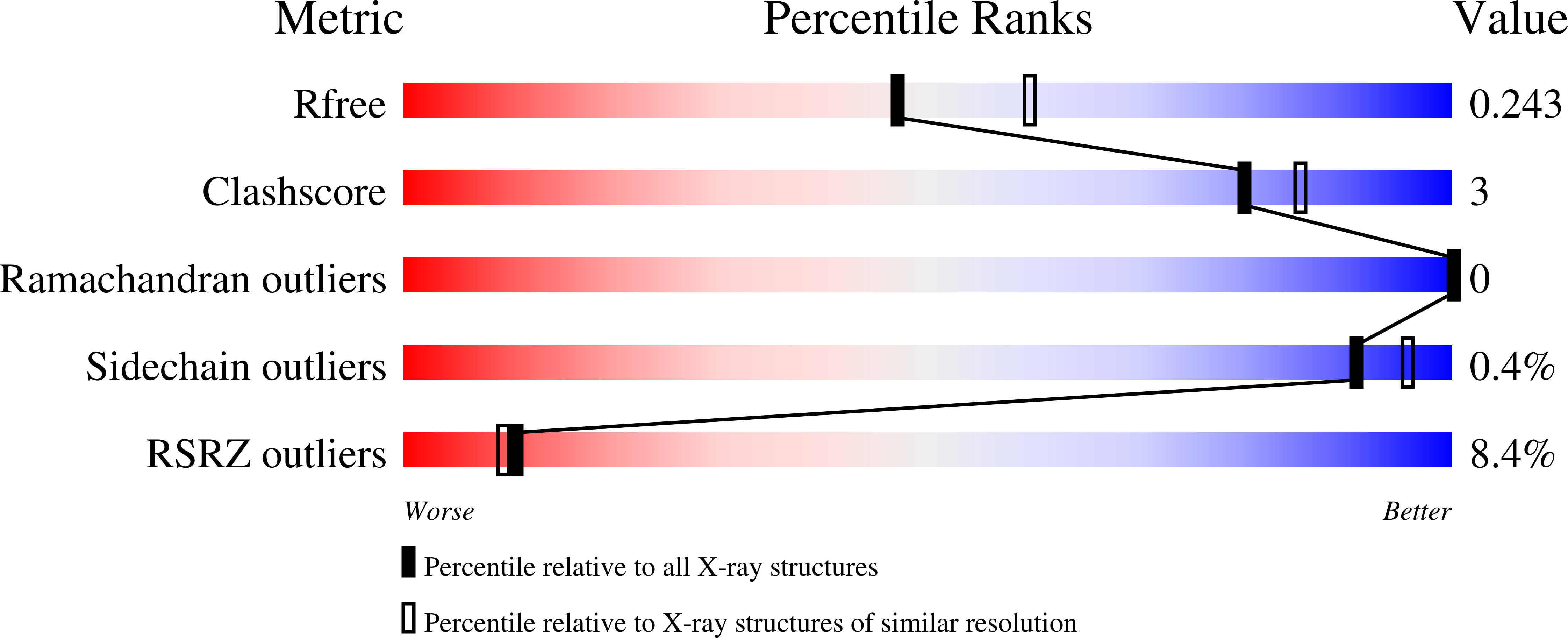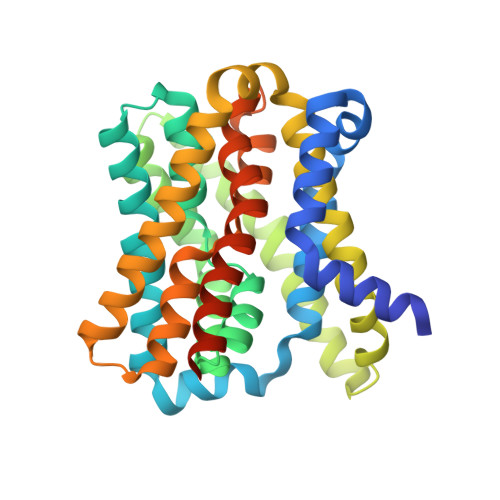Crystal Structure of a Bacterial Homologue of the Bile Acid Sodium Symporter Asbt.
Hu, N.-J., Iwata, S., Cameron, A.D., Drew, D.(2011) Nature 478: 408
- PubMed: 21976025
- DOI: https://doi.org/10.1038/nature10450
- Primary Citation of Related Structures:
3ZUX, 3ZUY - PubMed Abstract:
High cholesterol levels greatly increase the risk of cardiovascular disease. About 50 per cent of cholesterol is eliminated from the body by its conversion into bile acids. However, bile acids released from the bile duct are constantly recycled, being reabsorbed in the intestine by the apical sodium-dependent bile acid transporter (ASBT, also known as SLC10A2). It has been shown in animal models that plasma cholesterol levels are considerably lowered by specific inhibitors of ASBT, and ASBT is thus a target for hypercholesterolaemia drugs. Here we report the crystal structure of a bacterial homologue of ASBT from Neisseria meningitidis (ASBT(NM)) at 2.2??. ASBT(NM) contains two inverted structural repeats of five transmembrane helices. A core domain of six helices harbours two sodium ions, and the remaining four helices pack in a row to form a flat, 'panel'-like domain. Overall, the architecture of the protein is remarkably similar to the sodium/proton antiporter NhaA, despite having no detectable sequence homology. The ASBT(NM) structure was captured with the substrate taurocholate present, bound between the core and panel domains in a large, inward-facing, hydrophobic cavity. Residues near this cavity have been shown to affect the binding of specific inhibitors of human ASBT. The position of the taurocholate molecule, together with the molecular architecture, suggests the rudiments of a possible transport mechanism.
Organizational Affiliation:
Division of Molecular Biosciences, Imperial College London, London SW7 2AZ, UK.



















